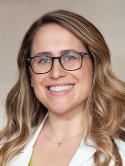Safety in numbers: Nursing leadership enhances patient safety during a rollout of photodynamic therapy at a comprehensive cancer center Meeting Abstract
| Authors: | Sharma, B.; Mediratta, S.; Bautista, C. |
| Abstract Title: | Safety in numbers: Nursing leadership enhances patient safety during a rollout of photodynamic therapy at a comprehensive cancer center |
| Meeting Title: | 47th Annual Congress of the Oncology Nursing Society (ONS) |
| Abstract: | Navigating how to "do no harm" can be complicated when all cancer treatments carry some level of risk, and it's a primary function of nursing leadership to guide their staff in the process. Photodynamic Therapy allows for treatment of lesions in the lung or esophagus at any stage of disease, with either curative or palliative intent, however there is significant risk of burns and ocular damage if the patient is exposed to light during the next 4-8 weeks. This presents a challenge to an institution where patients have outpatient and inpatient encounters across several well-lit campuses during that time. An additional complexity was that only a small volume of patients will qualify for this procedure each year (approximately 5-10). A Nursing Leadership Triad at a comprehensive cancer center developed a unique approach to manage this problem. In this model a Clinical Nurse Specialist, Nursing Professional Development Specialist and Nurse Leader came together to provide clinical expertise, education and operational support, respectively. This therapy had been utilized within the institution approximately 20 years prior, after a long hiatus is experiencing a new groundswell of clinical support. In preparation for re-emergence, operational safety concerns, education needs and practice updates were handled by the Leadership Triad in accordance to their unique roles to maximize the value of their expertise with one goal in mind--zero patient harm. Operational protections included coordination of and alerts to the five required sites (outpatient, infusion, pre and post procedure, endoscopy suite, inpatient) as well as ancillary areas the patient could touch including emergency department and intensive care staff. Pharmacy support is critical to success due to expense of the required medications and is coordinated by the operational lead via specialized email distribution. Measurements of safe lighting were taken by the electrical engineer and included in policy and education. A key success was adding a clinical alert into the documentation system for "light precautions". Clinical Nurse Specialist support was required to develop comprehensive patient education and a Standard of Care detailing light precautions and safe practice. Education was provided both live, virtually, and as an enduring module linked within the Standard of Care for staff refreshers. Six months into the program with an N of 2 patients, zero harm has been maintained. |
| Keywords: | cancer care facilities; photodynamic therapy; quality improvement; oncologic nursing -- education; neoplasms -- therapy; california; nurse administrators; congresses and conferences -- california; patient safety -- education |
| Journal Title: | Oncology Nursing Forum |
| Volume: | 49 |
| Issue: | 2 |
| Meeting Dates: | 2022 Apr 27-May 1 |
| Meeting Location: | Anaheim, CA |
| ISSN: | 0190-535X |
| Publisher: | Oncology Nursing Society (ONS) |
| Date Published: | 2022-03-01 |
| Start Page: | E92 |
| End Page: | E93 |
| Language: | English |
| DOI: | 10.1188/22.Onf.E2 |
| PROVIDER: | EBSCOhost |
| PROVIDER: | cinahl |
| PUBMED: | 35191905 |
| DOI/URL: | |
| Notes: | Meeting Abstract: P163 -- in PDF named "2022 ONS Congress Poster Abstracts" -- Source: Cinahl |
Altmetric
Citation Impact
BMJ Impact Analytics
Related MSK Work





